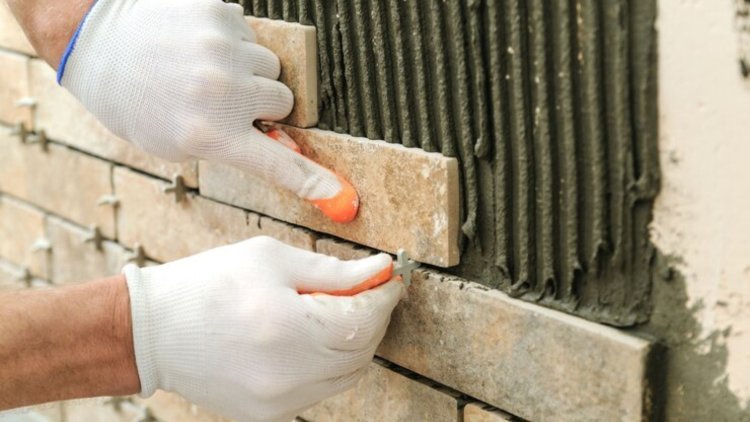Best Time to Schedule Commercial Retaining Wall Installation Services

Commercial retaining walls serve as essential structural elements in landscaping, providing stability, erosion control, and aesthetic appeal to outdoor spaces. Whether it's supporting elevated areas, preventing soil erosion, or creating terraced landscapes, retaining walls play a crucial role in enhancing the functionality and visual appeal of commercial properties. However, determining the best time to schedule retaining wall installation services is key to ensuring successful outcomes and minimizing disruptions to business operations.
We'll explore the factors to consider when scheduling commercial retaining wall installation services and identify the optimal timing for this essential landscaping project.
- Assessing Weather Conditions: Weather conditions play a significant role in the success of retaining wall installation projects. Extreme temperatures, heavy rainfall, and frost can all affect the stability and longevity of the wall. Therefore, it's essential to schedule installation services during periods of mild weather when conditions are favorable for construction. In many regions, spring and fall offer the most suitable weather conditions for retaining wall installation, as temperatures are moderate and precipitation is relatively low.
- Considering Seasonal Workloads: Landscaping companies often experience fluctuations in their workload throughout the year, with peak seasons typically coinciding with favorable weather conditions. When scheduling commercial retaining wall installation services, it's essential to consider the availability and workload of landscaping contractors. Booking installation services during off-peak seasons or months with lower demand may result in more flexible scheduling options and potentially lower costs.
- Planning Around Business Operations: For commercial properties, minimizing disruptions to business operations is a top priority when scheduling landscaping projects such as retaining wall installations. Depending on the nature of the business and the location of the retaining wall, it may be necessary to coordinate installation services during non-business hours or periods of low activity to avoid inconveniencing employees, customers, and visitors. Additionally, scheduling installation services during slower seasons or off-peak hours can help minimize disruptions and ensure a smooth construction process.
- Considering Soil Conditions: Soil conditions play a critical role in the stability and performance of retaining walls. It's essential to assess the soil composition, moisture levels, and drainage patterns of the site before scheduling installation services. Ideally, installation should take place when the soil is relatively dry and stable to facilitate proper compaction and foundation preparation. Additionally, scheduling installation services during periods of low precipitation can help minimize the risk of soil erosion and ensure optimal conditions for construction.
- Planning for Permitting and Approval Processes: Depending on local regulations and zoning requirements, commercial retaining wall installations may require permits and approvals from municipal authorities. It's essential to factor in the time needed to obtain permits and approvals when scheduling installation services to avoid delays and ensure compliance with local regulations. Working with experienced landscaping contractors familiar with the permitting process can streamline the approval process and help expedite project timelines.
- Considering Project Scope and Complexity: The scope and complexity of the retaining wall installation project can also influence the timing of scheduling services. Larger, more complex projects may require additional time for planning, preparation, and construction, while smaller projects may be completed more quickly. It's essential to consider the specific requirements and timeline of the project when scheduling installation services to ensure adequate time for completion and minimize potential delays.
- Accounting for Seasonal Landscaping Considerations: In addition to weather conditions, seasonal landscaping considerations can also impact the timing of retaining wall installation services. For example, scheduling installation services during the growing season may require special considerations to protect existing vegetation and minimize disruption to landscaping features. Working with experienced landscaping professionals can help mitigate potential challenges and ensure that installation services are scheduled at the most appropriate time for the site and project requirements.
- Planning Ahead for Future Landscaping Projects: Retaining wall installations often serve as foundational elements for future landscaping projects and outdoor improvements. When scheduling installation services, it's essential to consider the long-term vision and goals for the property and plan ahead for future landscaping projects that may be impacted by the retaining wall. By coordinating installation services with future landscaping plans, property owners can ensure cohesive and integrated outdoor spaces that enhance the overall functionality and aesthetic appeal of the property.
In conclusion,
Scheduling commercial retaining wall installation services in Everett requires careful consideration of various factors. By assessing these factors and planning strategically, property owners can ensure successful retaining wall installations that enhance the stability, functionality, and visual appeal of their outdoor spaces. Whether scheduling services during the spring, fall, or another time of year, working with experienced landscaping professionals is key to achieving optimal results and maximizing the benefits of retaining wall installations for commercial.
What's Your Reaction?











![Wireless Connectivity Software Market Size, Share | Statistics [2032]](https://handyclassified.com/uploads/images/202404/image_100x75_661f3be896033.jpg)




